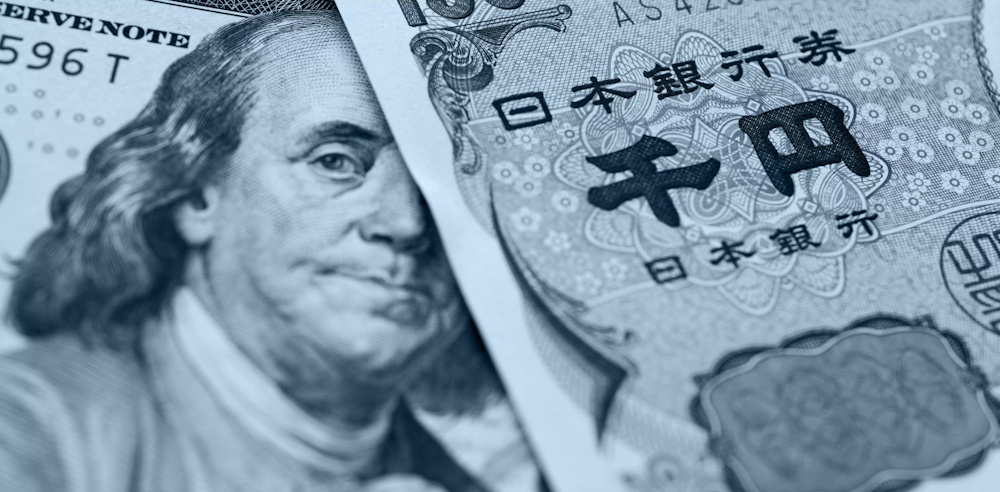USD/JPY hovered near 152.00, maintaining its strength despite a global dollar downturn as traders prepared for a potentially significant week influenced by decisions from the Federal Reserve and the Bank of Japan. The pair momentarily fell to 151.70 before finding stability, as buyers upheld crucial support in anticipation of the Fed’s expected 25 bps rate cut and increasing speculation regarding a potential policy shift from the BoJ later this week. Yield spreads remain the defining force — U.S. 10-year Treasury yields near 4.0% versus Japan’s 0.75% continue to anchor the carry trade, allowing USD/JPY to stay resilient even as broader dollar sentiment softens. The Federal Reserve is anticipated to reduce rates for a second consecutive meeting, bringing the federal funds range down to 3.75%–4.00%, while indicating that the reduction of the balance sheet may soon come to a close. Chair Jerome Powell’s tone will be crucial: a neutral stance could maintain USD/JPY above 151.70, while a dovish outlook suggesting further cuts might lead to a short-term pullback toward 150.47–149.50.
On the Japanese side, the central bank faces increasing pressure to tighten. Even though the central bank is keeping its policy rate steady at 0.5%, it is anticipated to indicate a 25 bps increase in December, as markets are factoring in a 60% likelihood of a shift by the end of the year. Prime Minister Sanae Takaichi’s new fiscal expansion plan — designed to enhance consumption — introduces an additional layer of uncertainty. If fiscal stimulus triggers inflationary pressure, the BoJ might need to respond more quickly, which could reduce the U.S.-Japan yield differential and bolster the yen. The overarching theme of the week goes beyond just monetary policy. The forthcoming meeting between Trump and Xi Jinping in Seoul has the potential to alleviate trade tensions between the U.S. and China, which may impact the demand for safe-haven assets. Trump’s remarks about potentially easing tariffs and discussing Nvidia’s Blackwell AI chip exports boosted risk sentiment, sending the Nasdaq and S&P 500 futures to fresh records. In FX markets, this optimism led to a decline in the yen, as a risk-on sentiment usually encourages movement away from the low-yielding currency.
Traders remain cautious. The ongoing partial shutdown of the U.S. government, nearing its 29th day, has obscured clarity regarding essential labor data, hindering the Fed’s capacity to assess advancements in full employment. The interplay of unpredictable fiscal conditions, declining inflation, and restricted liquidity has led Powell to indicate that the Fed might conclude quantitative tightening sooner than anticipated — a dovish move that could negatively impact the dollar if validated. If the Fed indicates “one and done,” maintaining rates after this week’s cut, USD/JPY could revisit the 153.20 resistance level and strive for a breakout towards 154.80. On the other hand, a dovish Powell alongside a hawkish BoJ might push the pair below 150.00, prompting Tokyo to contemplate intervention if yen appreciation speeds up past 149.00. From a technical perspective, USD/JPY is currently moving within a narrow range of 151.70 to 153.30, consolidating above the daily Fair Value Gap located at 151.73–150.47. The pair exhibits a cautiously optimistic structure, establishing higher lows and indicating accumulation in anticipation of the Fed decision. Immediate resistance is positioned around 153.20–153.30, and a breakout from this level could initiate a move towards 154.80, which represents the previous swing high.
On the downside, 150.90–151.20 serves as initial support, while 150.00 represents a significant psychological level. A daily close below 150.47 would negate the short-term bullish scenario and reveal potential deeper corrections towards 149.50 and 148.80, particularly if global risk sentiment shifts to a more defensive stance. Momentum indicators reflect a neutral stance, as RSI hovers around 55 and MACD shows signs of flattening, highlighting the market’s expectations leading up to central bank events. The comments from U.S. Treasury Secretary Scott Bessent, which express backing for the independence of the BoJ, have strengthened the belief that Japan’s central bank will persist with policy normalization, even in the face of governmental pressure. This independence is considered crucial for mitigating extreme fluctuations in the yen. Simultaneously, Japan’s consumer confidence index, expected to increase from 35.3 to 35.6, indicates that domestic spending may improve, potentially driving inflation and prompting a policy adjustment sooner than expected. If the BoJ tightens faster than anticipated — especially with inflation remaining above 2% — markets might witness USD/JPY drop below 150, reversing a portion of its 2025 rally. However, the increase in fiscal measures might postpone that shift by encouraging imports and countering yen strength via trade dynamics. Economist indicated that 60% of experts anticipate a BoJ rate increase to 0.75% by Q4, while 46% foresee it occurring by January 2026.

